Green Thumbs Up: Inclusive Spring Gardening for Families with Special Needs Children
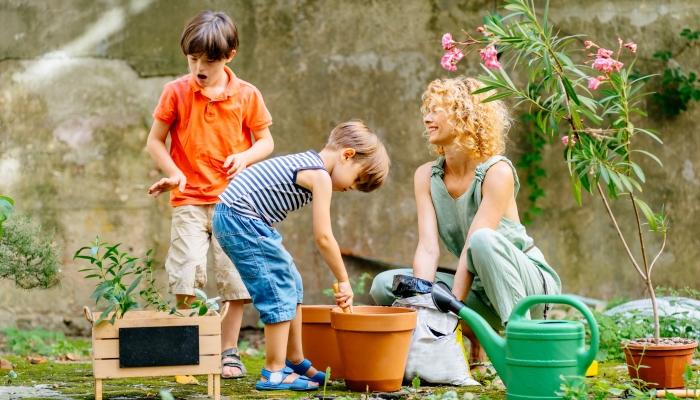
This post may contain affiliate links; please see our terms of use for details.
- Inclusive gardening helps enhance children’s fine motor skills, problem-solving abilities, environmental awareness, and social skills.
- Using raised beds and accessible space makes your garden more inclusive for children with special needs.
- Gardening with special needs children benefits their physical and emotional health while promoting independence.
There’s nothing like growing your own food, and when you can do it with your kids, it’s even better. However, if your child has physical or emotional disabilities, it can make the process challenging.
Special needs gardening provides kids with the tools to garden while providing an inclusive environment to feel safe.
Navigating a new skill or hobby can be challenging, but with some guidance, you’ll be on your way. Remember, it’s normal if things don’t go as planned—so instead, focus on the positive.
Understanding Special Needs and Gardening
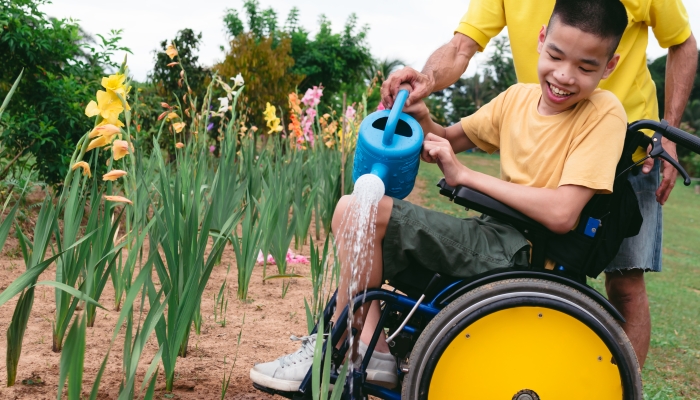
To better understand special needs and gardening, it’s essential to recognize and accommodate the diverse challenges and abilities individuals may encounter. Creating an inclusive and accessible gardening space requires catering to various cognitive, sensory, and physical needs.
By adapting environments and gardening practices, you can ensure everyone can enjoy the joys and therapeutic benefits of gardening regardless of ability.
Types of Special Needs
The special needs population comprises more than 42.5 million people in the United States11. Leppert, R.. 8 facts about Americans with disabilities. Pew Research Center. 2023. https://www.pewresearch.org/short-reads/2023/07/24/8-facts-about-americans-with-disabilities/#:~:text=Overall%2C%20there%20are%20about%2042.5,Census%20Bureau%20data%20from%202021.. While a disability shouldn’t define a person, understanding more about specific conditions and disorders makes it easier for a person to feel included in the community.
Types of special needs cases you may be familiar with include:
- Autism spectrum disorders
- Physical disabilities
- Sensory processing disorders
- Learning disabilities
Adapting Gardening to Various Needs
Adapting your garden to your child’s specific needs and abilities is vital. For example, if you’re concerned your child will put the plants in their mouth, ensure you opt for non-toxic and safe plants.
You may also want to consider an easily accessible garden if your child is in a wheelchair, ensuring they have the full potential to experience the benefit of an inclusive garden.
If you’re a teacher, consider the needs of your students when creating a garden at school. For example, some students may not be able to bend over easily and need a stool or place to sit while working.
Planning Your Inclusive Garden
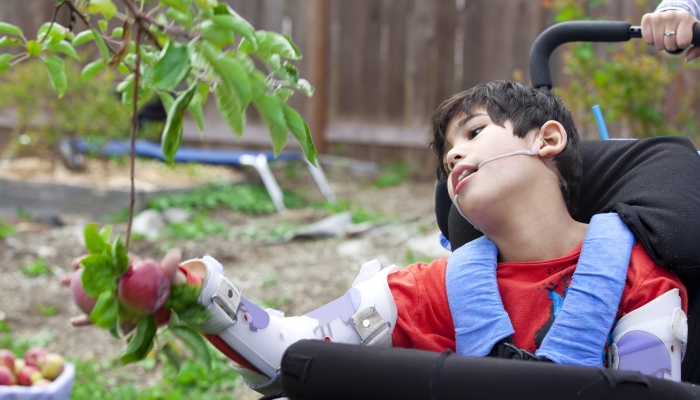
Now, let the fun begin! While the health benefits are plentiful, starting your own garden is also really fun! However, there are a few considerations to remember when planning your inclusive garden.
Choosing the Right Location
When choosing the right location for your inclusive garden, consider your plants’ sunlight and shade requirements. Your kids can help you pick the best soil, grab a watering can, and choose the site of your garden.
You also want to consider what season your plants grow best and mind the elements. For example, if it’s summer, you want to ensure you’re not planting if it’s too hot or dry.
Here are a few tips from the University of New Hampshire22. Preparing a Vegetable Garden Site. University of New Hampshire Extension. https://extension.unh.edu/resource/preparing-vegetable-garden-site about choosing the right spot to plant a garden:
- Choose a sunny spot
- Avoid low-lying areas
- Avoid the perimeter of older houses
- Consider convenience and easy access
Selecting Appropriate Tools and Equipment
It’s a great idea to opt for adapted gardening tools with ergonomic handles or ones specifically designed for those with limited dexterity or strength, avoiding sharp tools and anything challenging to manage.
Finding lightweight materials with easy-grip designs helps make gardening tasks accessible for everyone.
In addition, when using soil, ensure your children wash their hands after planting. You should always check the soil packaging for warnings and recommendations. If your child puts things in their mouth, you should lay the soil down.
Plant Selection
When you choose plants, look for various textures, scents, and colors that help cater to different sensory preferences. You can also incorporate sensory-friendly additions like bird feeders, wind-resistant plants, and wind chimes.
I also recommend finding easy-to-grow or edible plants to help keep your child interested in gardening. When kids know the food they are eating is what they planted, it makes it much more appealing.
Engaging Children in the Gardening Process
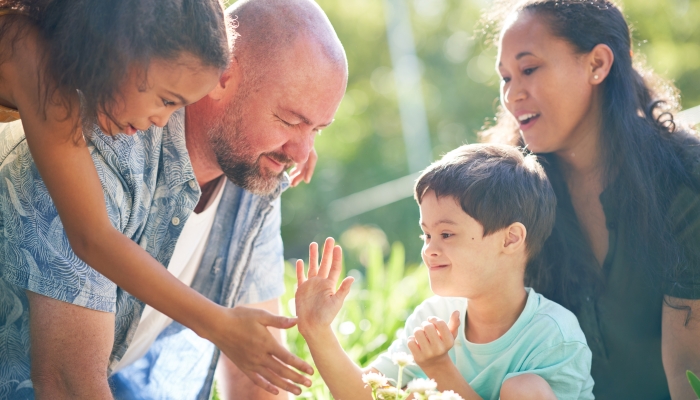
Communication is essential, so your kids or students should know to listen and follow directions. Since it’s easier said than done, it’s always best to go at the individual’s pace and respect their abilities.
Pre-Gardening Activities
Before you start your garden, you can read books to get your children excited about the process. In addition, you can explain the life cycle of plants in an engaging and straightforward manner.
You can also create a sensory bin with seeds and plants to get your child used to the feeling of various textures when planting. It’s a good sign if your child is comfortable handing the items in the sensory bin.
During Gardening
While preparing your garden, encourage your children to observe the process and ask questions about the necessary elements to create gardens. You can also start assigning age-appropriate tasks like picking out seeds, laying the soil, watering, harvesting, and weeding.
Another fun project is to grow a musical instrument, which is an excellent idea if your child has difficulty staying on task.
Post-Gardening Activities
It’s difficult to wait for your crops to grow, so you can plan activities to keep your kids entertained while they wait. For example, you can have your children create art with nature by collecting items around the yard and arranging them on construction paper.
In addition, you can research the plants you are growing or the impact gardens have on the environment to help bring learning into the activity.
Overcoming Challenges in Inclusive Gardening
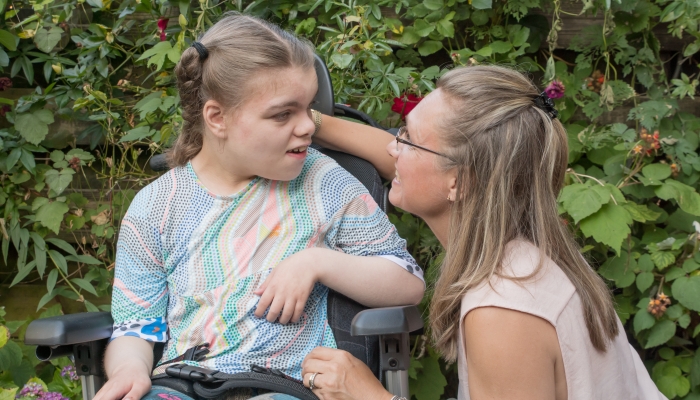
Gardening activities for kids have the opportunity to create an accessible and harmonious space for children of all abilities to enjoy the therapeutic benefits of creating a garden and connecting with nature. However, specific challenges arise when striving for an inclusive gardening experience.
Dealing with Sensory Overload
Some children may have sensory sensitivities exacerbated by traditional gardening practices. To help prevent discomfort, provide quiet corners for a break from sensory stimuli. Consider also creating a sensory garden to keep the focus away from overstimulating your kids.
In addition, anytime you feel your child is being overstimulated, step back and take a break from the process. When you have to force something, your child is more likely to have negative feelings about the activity.
Managing Physical Limitations
Consider raised garden beds or vertical gardens to help manage physical limitations. A raised bed ensures a child doesn’t have to be on the ground to garden. The Boldly Growing Cedar Raised Planter Box with Legs is the perfect height so individuals don’t have to bend over to plant their seeds.
- NATURAL, UNFINISHED WOOD: Product looks great as-is, or finish planter box to your own liking
- STURDY HEAVY-DUTY DESIGN: This beautiful elevated garden bench planter is sturdier than any of the competition and is the perfect addition to any space
- STRONG, ROT-RESISTANT YELLOW CEDAR: Easily supports the weight of soil, water, and plants without breaking! Makes an excellent herb planter
- PRODUCT DIMENSIONS: 48” (L) by 24” (W) x 33” (H) and holds 5 cubic feet of soil total
Resources and Support for Families
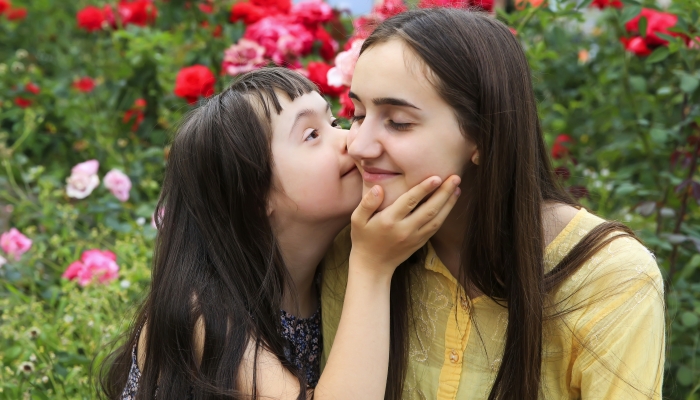
One of the best things you can do as a family is get to know your community and find programs suitable for children with disabilities.
Community Programs and Workshops
Check out local gardening clubs, which offer therapeutic gardening programs. The library is a great place to visit for garden programs and certain community-centered activities. You can search online to help streamline the process of finding activities and appropriate books.
Most Home Depots have a monthly workshop for which you can sign your kids up. My kids have done it, and it’s a lot of fun. The best part is, it’s free! Participants get their own kit to create birdhouses, planters, butterflies, and more.
The project changes monthly, so it’s an excellent opportunity to practice specific coordination skills, like using a hammer and screwdriver, while engaging with other children.
Online Resources
You can also utilize blogs and forums for gardening families, including virtual classes and tutorials. The National Gardening Association33. Gardening Discussion Forums. Garden.org. https://garden.org/forums has online blogs full of vital information to help with your gardening journey.
In addition, the book Gardening for Children With Autism Spectrum Disorders and Special Educational Needs: Engaging With Nature to Combat Anxiety, Promote Sensory Integration, and Build Social Skills is an excellent resource, and I recommend having it on hand.
- Etherington, Natasha (Author)
- English (Publication Language)
- 160 Pages – 02/15/2012 (Publication Date) – Jessica Kingsley Pub (Publisher)
Benefits of Special Needs Gardening
The benefits of special needs gardening range from health benefits to horticultural therapy. If your child has a disability, you’ll appreciate how horticultural therapy helps promote healing while using plants and specific activities to help people with special needs.
Additional benefits include:
- Mental benefits
- Physical benefits
- Developing communication skills
- Working on essential life skills
- Encouraging social interactions
- Experiencing tactile input
References
- Leppert, R. (2023, July 24). 8 facts about Americans with disabilities. Pew Research Center. https://www.pewresearch.org/short-reads/2023/07/24/8-facts-about-americans-with-disabilities/#:~:text=Overall%2C%20there%20are%20about%2042.5,Census%20Bureau%20data%20from%202021.
- Preparing a Vegetable Garden Site. University of New Hampshire Extension. (n.d.). https://extension.unh.edu/resource/preparing-vegetable-garden-site
- Gardening Discussion Forums. Garden.org. (n.d.). https://garden.org/forums
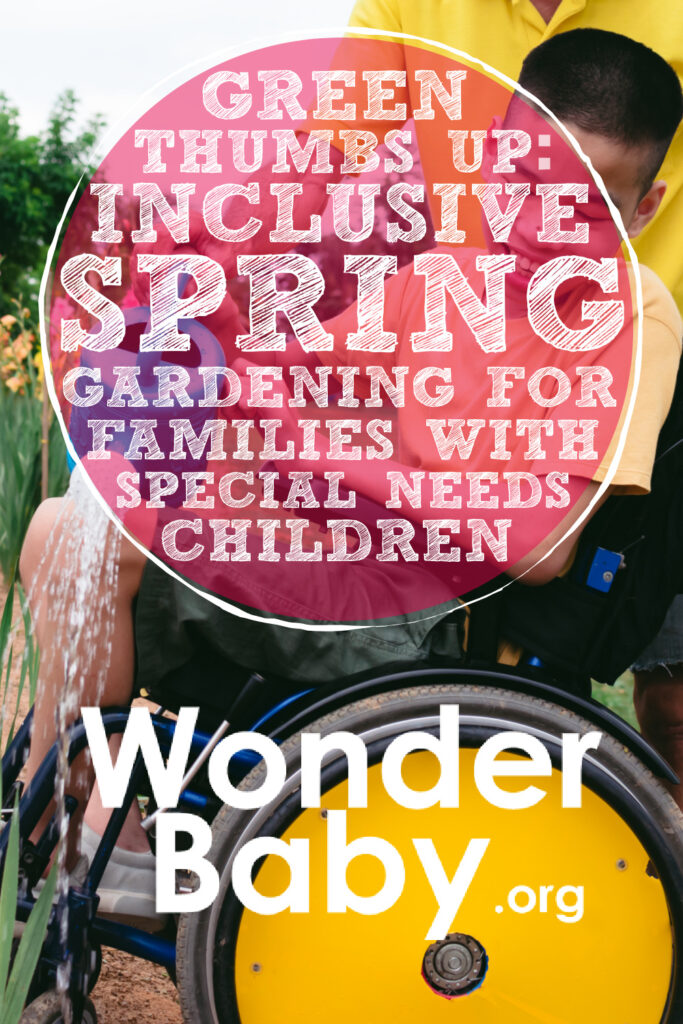
Related Posts

Eye Conditions and Syndromes, Visual Impairment
Neuralink Announces Plans to Restore Sight to the Blind with Brain Chip
Elon Musk’s company Neuralink has announced plans to begin human trials of its new “Blindsight” brain chip by the end of 2025.

Special Needs
5 Spring Cleaning Tips for Families of Children with Disabilities
Spring cleaning is an opportunity to create a more accessible, organized, and supportive space for your child with disabilities. Declutter, deep clean, and refresh!

Visual Impairment
The Gift of Understanding: How a Young Child Helps His Blind Father Navigate Life
When a parent is blind, it’s natural for people to wonder how their sighted child will adapt. Will they struggle to understand their parent’s needs? Will they feel burdened by...

